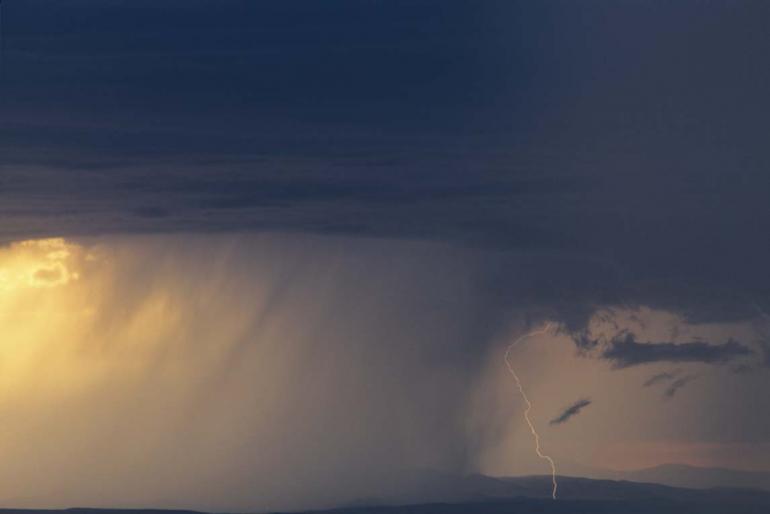A Little Bit of Everything
Eastern Montana has its lengthy cold spells, Livingston its winds, Great Falls its temperate weather-but the Gallatin area has a little bit of everything. Part of a semiarid weather zone that experiences the greatest variety of climates in the state, the Gallatin region can be subject to sudden artic air masses, large nightly temperature drops, thunder during spring snow storms, and periodic Chinook winds from the west.
For a time, Gallatin County held the national record for the coldest temperature in the lower 48 states. On February 9, 1933, West Yellowstone recorded an overnight low of 66 degrees below zero. That record was broken, however, on January 20, 1954, when a station near Rogers Pass out of Helena reported a low of 70 degrees below zero.
During the winter of 1886-1887, massive snowfall and frigid storms alternated with Chinook winds from January to late spring, causing extensive losses to livestock. British horse breeders quit the Gallatin Valley as soon as they could. They had seen their prize pilgrim cattle and horses caked with snow and ice on the side facing the eastern winds. Some livestock they did not find until spring, dead in washes and gulches. They became convinced that livestock brought in from other places could not survive in such a varied climate.
Some of the officers and men stationed at Fort Ellis regarded winter duty at the military establishment as an extreme form of punishment for whatever sins earlier committed. As they stood to warm themselves before a raging fire, they could see the sheen of ice forming on the inside walls across the room.
During most Gallatin Valley winters, except for open and dry 1929 (dubbed the "winterless winter" when few storms occurred), residents adjusted to changing conditions as best they could. During the days of rural mail delivery by horse and buggy, farmers and ranchers along the route prepared heated bricks or bags of salt to line the buggy floor so that the mailman's feet would keep from freezing.
Henry William Becker relied on the portable heat for his feet and legs when he delivered mail near Manhattan. Jake Krol also had warm feet for his rounds through the Holland Settlement. Sometimes wind and snow make for a bad combination. During the long winter of 1949, when winds compacted snow to such a hardness that shovels-even tractors-could not clear some roads. Maynard Sinton would fly over Amsterdam from time to time and drop bags of mail. By February, the Army Corps of Engineers was in the area, piling snow higher and higher beside county roads. A road would be open for a day or two, when another wind would make a new marble-hard drift. It was April before some county roads opened again.
Pipes need only freeze once; remedies were applied thereafter. Little tents were constructed over the vulnerable plumbing; sometimes an electric light bulb was placed near the pipe to keep it from freezing. Schools opened and closed. Funerals and weddings were postponed. Church service was sporadic. Some made the best of it by finishing books they had put aside. Students put away their fountain pens until spring because the ink would freeze and split the pen. And families got out brightly colored tissue papers to fashion flowers for the next summer's Sweet Pea celebration.











